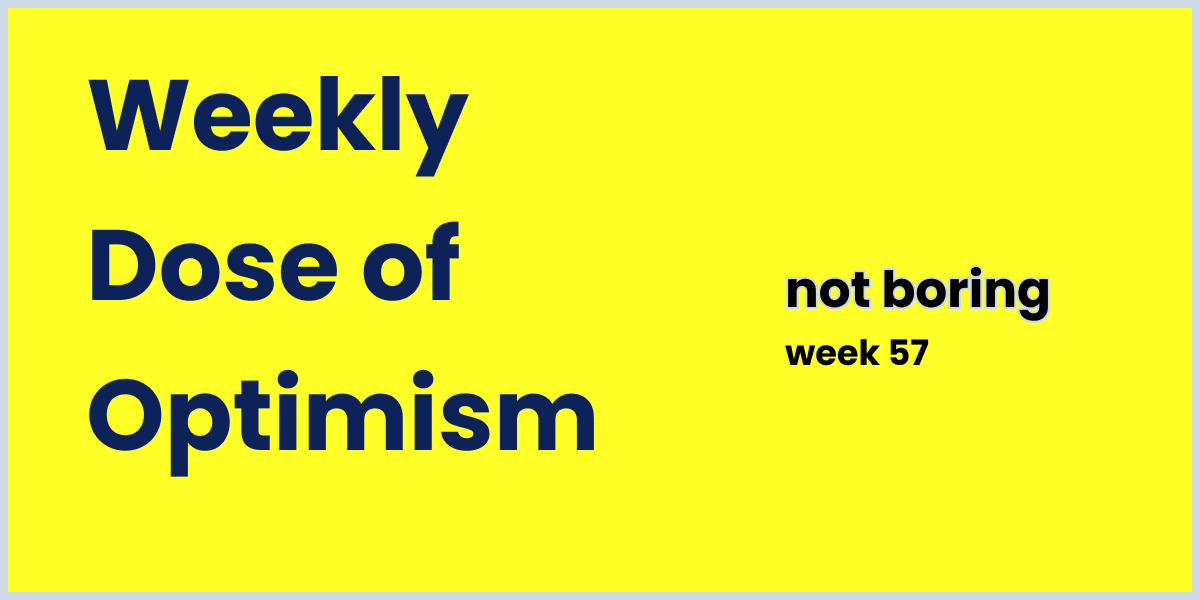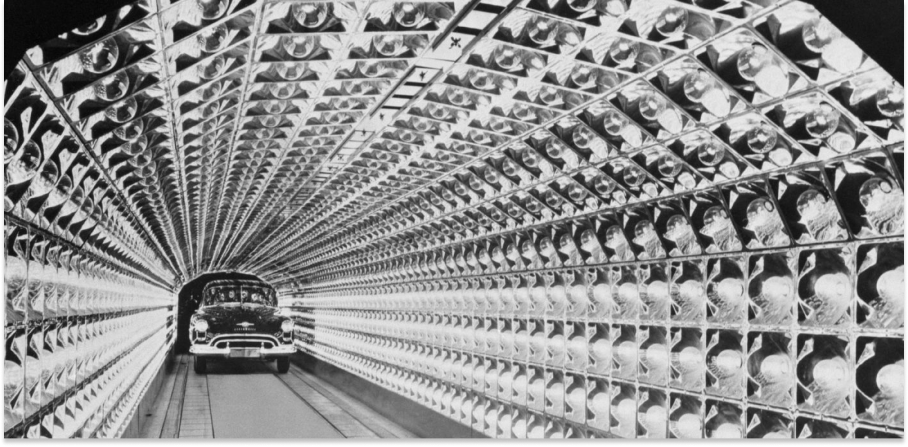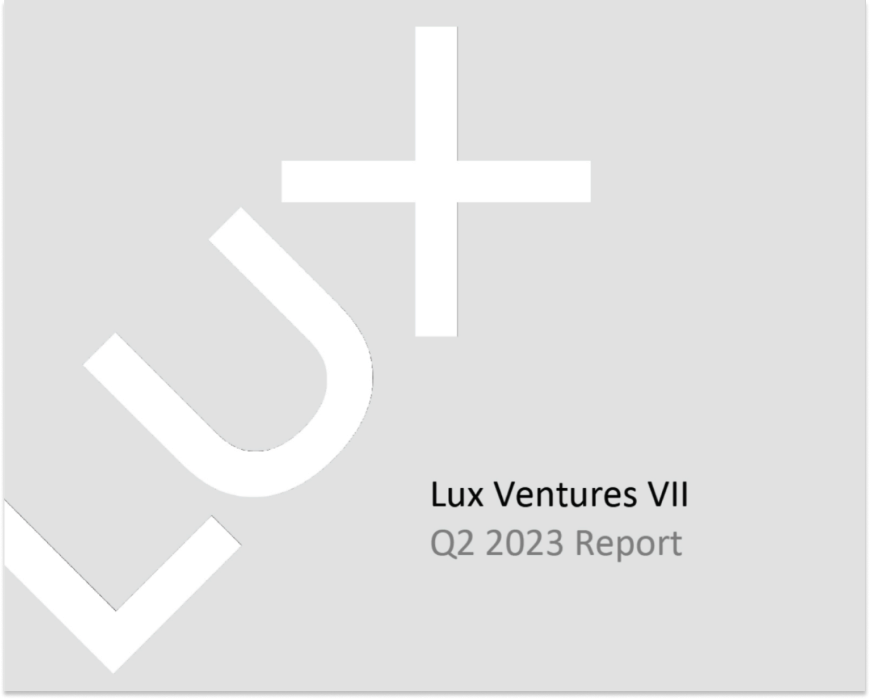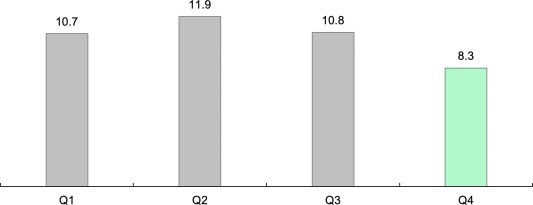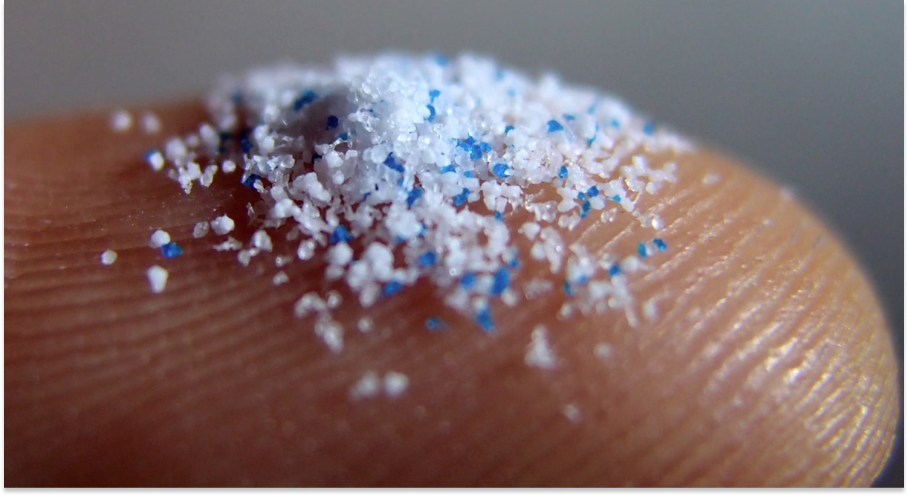Not Boring by Packy McCormick - Weekly Dose of Optimism #57
Weekly Dose of Optimism #57Manufacturing in America, Indian Moon, Time-Price, Creatine & Cancer, MicroplasticsHi friends 👋, Happy Friday and welcome back to our 57th Weekly Dose of Optimism. I’m writing this on the return flight back from a 6 hour business trip in Colorado. I left NYC at 5am, spent the day in Denver and will be back in NYC before midnight. You see, aside from writing this newsletter, I run a business called Create. We sell creatine monohydrate gummies. Why do I bring this up? Well, oddly enough, creatine comes up twice in this week’s newsletter. Creatine and optimism. That’s what we do here. Let’s get to it. The Weekly Dose is brought to you by… Write of Passage Packy here. Really, every Not Boring is kinda brought to you by Write of Passage. In 2019, as I was thinking about leaving Breather, I decided to start writing to stretch my brain a little and see if I could shake any magic out of the internet. I saw a tweet from David Perell about a new course he was starting: Write of Passage. Perfect timing. The course changed the trajectory of my life and career. It helped my find my Personal Monopoly, start my Substack, and build a habit of writing every week that’s persisted for four years. And Write of Passage has now done the same thing for hundreds of other people. I got to join the last class of a recent cohort and was blown away by how much the course meant to people. WoP just keeps getting better and better. The next cohort of Write of Passage starts later this fall and open-enrollment starts September 12th. But prior to that, Write of Passage is offering a free workshop with Cultural Tudor. In the workshop, you’ll learn how he went from working at McDonalds to 1.5M Twitter followers all by writing online. Grow Your Audience with the Cultural Tutor in on Wednesday September 6th, but you can register now. It’s a great way to sample the Write of Passage experience, prior to committing. (1) America Is Back in the Factory Business John Keilman for The Wall Street Journal
The Journal published an essay detailing just how “back” manufacturing is in the U.S. The findings? Very back! But after decades of outsourcing manufacturing, the U.S. can’t suddenly decide to start make everything again overnight. No, in order to manufacture more goods, the U.S. first needs to build more factories. Construction spending related to manufacturing in 2022 reached $108B, the highest annual total in over 30 years. And with that surge of construction spending, manufacturing capacity is expected to rise significantly in the next couple of years (although it hasn’t moved the needle much yet.) So why the big push for U.S. manufacturing? On the public side, The Biden Administration has declared the production of electric vehicles, semiconductors, and other goods a matter of national security. And the Administration has pumped tens of billions into onshoring the capacity and talent needed to build those goods in the U.S. On the private side, companies learned during the early days of the pandemic that their fragile supply chains were a bit over reliant on China and could benefit from producing some goods closet to home. Take Vireo Systems Inc, the makers of the popular creatine-based product CON-CRĒT. Prior to covid, they imported all of their creatine from China, but experienced a major shortage during 2021 due to the combination of a surge creatine popularity and a totally backlogged shipping lanes from China to the U.S. For a period of time, you basically couldn’t find creatine in the U.S. (which is partially what prompted me to look into starting a creatine business.) Now, in a move that would’ve been unthinkable just a couple of years ago, Vireo is opening up a creatine plant in Nebraska in order to have a more control over their supply. With all this capacity coming on-line in the next couple of years, there are concerns over whether or not we’ll have the labor (both skilled and unskilled) to fill factories. On the unskilled side of things, the answer (and hope) is that automation will largely fill the labor gaps and also keep the costs of producing in the U.S. down. On the skilled side of things, we have some work to do. A semiconductor plant in Arizona isn’t going to do much for us if we don’t have the labor to fill those highly specialized jobs. One answer is importing that talent (which is likely what will happen for semiconductors specifically) and the other answer is a massive re-training of the American workers to re-establish the U.S. as a manufacturing hub once again, we’ll likely need a lot of both. (2) Chandrayaan-3 spacecraft lands on the moon in 'victory cry of a new India' Nivedita Bhattacharjee for Reuters
In what Prime Minister Narendra Modi called “a victory cry of a new India,” an Indian spacecraft landed on the south-side of the moon. Chandrayaan-3’s landing makes India the fourth nation to successfully land on the moon, joining the U.S., China, and Russia. And they did it for only $75 million! The landing is also particularly sweet, as it came just days after a Russian craft crashed attempting to perform a similar landing. (Rumors out of Russia are that Putin thought Prigozhin was on the spacecraft.) The location of landing on the south side of the moon also holds some scientific importance, as its tough terrain could supply fuel, oxygen and drinking water for future missions. But really, this is a matter of national pride for India. Nearly 7 Million people livestreamed the landing on Youtube. People across the country were glued to their televisions and then erupted into the streets to dance and celebrate the landing. This was a one a one small step for man, one giant leap for India type of moment. Earth’s most populace nation now has a presence on the moon. Chalo! From Lux Capital
Our friends over at Lux Capital released their most recent quarterly LP Letter to the public this week. Lux is a venture capital firm that has for years invested in cutting-edge science and hard-tech businesses; they help “turn sci-fi into sci-fact.” The letter focuses on the collapse of Time-Price over the course of recent history. To measure time-price, simply divide the nominal price by nominal hourly income, and the answer is how long you have to work to buy something. It’s a funny concept to think about, especially during periods of high inflation. But the time-price of most anything today is lower than what it was 40 years ago. Back in 1980, a piece of gum may have cost $0.05, but you also had to work much longer to make that $0.05. In Lux’s view, as Time-Price plummets, the arc of progress drifts upwards. Technology drives down time-price, which allows us to consume more for less, and to spend more time focusing on new ideas and new technologies. And the cycle repeats and flywheels, forming the smooth, upwards sloping arc of progress we’ve experienced over the last couple of centuries. This is a decidedly optimistic message coming from one of the firms most aggressively investing in the technologies that cause some of us to be fearful of the future: AI, robotics, biotech. Their message is one of abundance. We need more people, more ideas, more technology all working towards driving down Time-Price. (4) Dietary creatine and cancer risk in the U.S. population: NHANES 2017–2020 Ostojic, Grasaas, Cvejic for Journal of Functional Foods
It’s funny how life works. If you had told me just 3 years ago that I’d be hawkishly following the latest in “creatine research” I wouldn’t have believed you. But alas. Staying up-to-date on the latest in creatine research is how I spend much of my time these days. Which surprisingly, is more exciting than it sounds — mostly because there’s been a rush of new creatine research over the last couple of years. Like this report from the Journal of Functional Foods, examining the relationship between dietary creatine intake and cancer risks. The report, which was published this month, has two major findings:
Now, the analysis isn’t perfect — there are confounding variables, it wasn’t a DBRCT, etc — but the findings were pretty clear: maintaining a creatine-rich diet reduces the risk of cancer. So what’s a creatine rich diet? Steak, beef, chicken, herring, salmon, tuna, and some dairy products. The study did not determine if exogenous creatine supplementation also reduced the risk of cancer. More research is certainly needed, and when it comes, this creatine-loving newsletter writer will be the first to share it with you. (5) Scientists Say New Device Can Scrub 99.9% of Microplastics from Water Noor Al-Sibai for Futurism
Packy here again. I love this kind of story. Microplastics are a boogeyman that I’ve been vaguely aware of but largely ignored because what’re ya gonna do? They live in the corners of my brain somewhere between seed oils and 5G cancer. But some people get very worked up about microplastics. They’re one of the latest trendy terrors that will kill us all. Well, not if scientists at Canada's University of British Columbia and China's Sichuan University have anything to say about it! They figured out a way to use fruit and sawdust to filter between 95.2 and 99.9 of microplastics out of water. We need the Brita of microplastics filtration to scale the technology before we can officially pronounce this existential threat an ex-risk, but it looks like microplastics are on their way to join overpopulation and resource depletion on the shelf of would-be killers tamed by a little human ingenuity. Humans rock. That’s all for this week. We’ll be back in your inbox on Tuesday. Thanks for reading, Dan + Packy |
Older messages
A Market For (Almost) Everything
Tuesday, August 22, 2023
The temptations and trade-offs of legibility and liquidity
Weekly Dose of Optimism #56
Friday, August 18, 2023
Jobs Biden, Pink Floyd, Pig Kidneys, Humanoids, Coinbase Futures
Sci-Fi Idea Bank
Tuesday, August 15, 2023
3567 Sci-Fi Ideas Waiting to Be Brought to Life
Weekly Dose of Optimism #55
Monday, August 14, 2023
Ignition (Remix), Semaglutide MACE, Martian Climate, Joscha Bach, Nueralink, Lasso & Jolt
Weekly Dose of Optimism #54
Friday, August 4, 2023
The Float, Cancer Drugs, WTF Happened in 2023, Nuclear Importance, WattCarbon, Vial
You Might Also Like
🔮 $320B investments by Meta, Amazon, & Google!
Friday, February 14, 2025
🧠 AI is exploding already!
✍🏼 Why founders are using Playbookz
Friday, February 14, 2025
Busy founders are using Playbookz build ultra profitable personal brands
Is AI going to help or hurt your SEO?
Friday, February 14, 2025
Everyone is talking about how AI is changing SEO, but what you should be asking is how you can change your SEO game with AI. Join me and my team on Tuesday, February 18, for a live webinar where we
Our marketing playbook revealed
Friday, February 14, 2025
Today's Guide to the Marketing Jungle from Social Media Examiner... Presented by social-media-marketing-world-logo It's National Cribbage Day, Reader... Don't get skunked! In today's
Connect one-on-one with programmatic marketing leaders
Friday, February 14, 2025
Enhanced networking at Digiday events
Outsmart Your SaaS Competitors with These SEO Strategies 🚀
Friday, February 14, 2025
SEO Tip #76
Temu and Shein's Dominance Is Over [Roundup]
Friday, February 14, 2025
Hey Reader, Is the removal of the de minimis threshold a win for e-commerce sellers? With Chinese marketplaces like Shein and Temu taking advantage of this threshold, does the removal mean consumers
"Agencies are dying."
Friday, February 14, 2025
What this means for your agency and how to navigate the shift ͏ ͏ ͏ ͏ ͏ ͏ ͏ ͏ ͏ ͏ ͏ ͏ ͏ ͏ ͏ ͏ ͏ ͏ ͏ ͏ ͏ ͏ ͏ ͏ ͏ ͏ ͏ ͏ ͏ ͏ ͏ ͏ ͏ ͏ ͏ ͏ ͏ ͏ ͏ ͏ ͏ ͏ ͏ ͏ ͏ ͏
Is GEO replacing SEO?
Friday, February 14, 2025
Generative Engine Optimization (GEO) is here, and Search Engine Optimization (SEO) is under threat. But what is GEO? What does it involve? And what is in store for businesses that rely on SEO to drive
🌁#87: Why DeepResearch Should Be Your New Hire
Friday, February 14, 2025
– this new agent from OpenAI is mind blowing and – I can't believe I say that – worth $200/month
